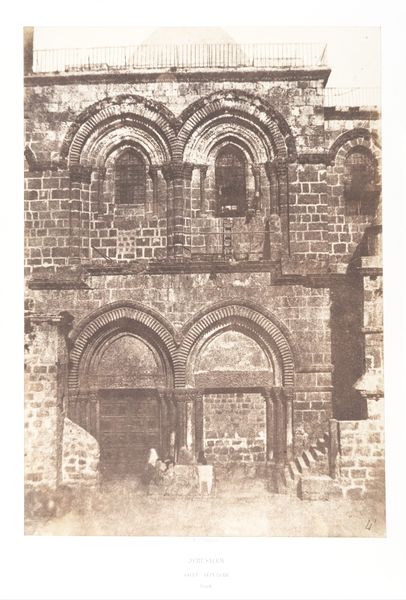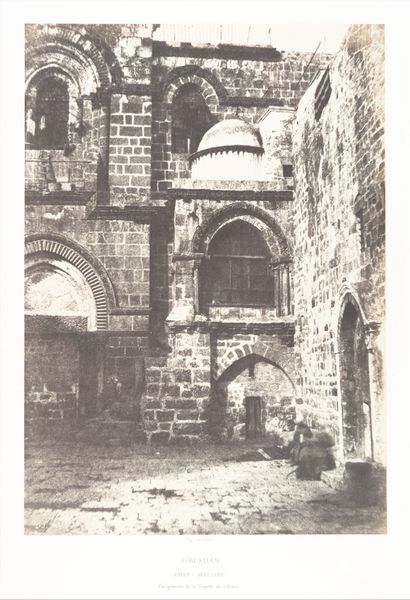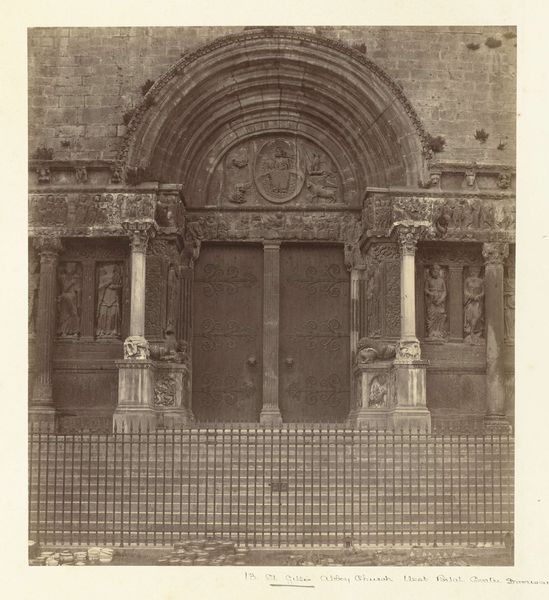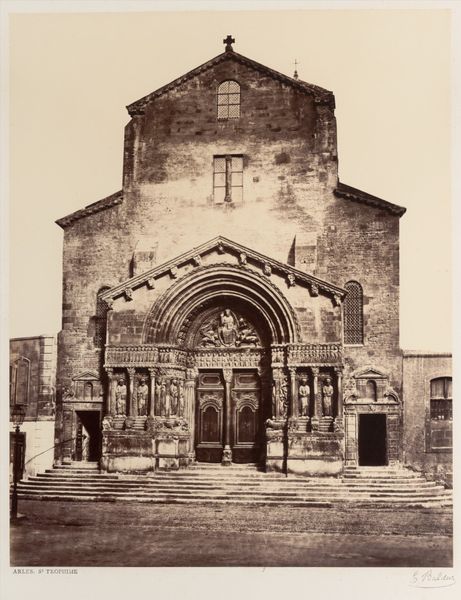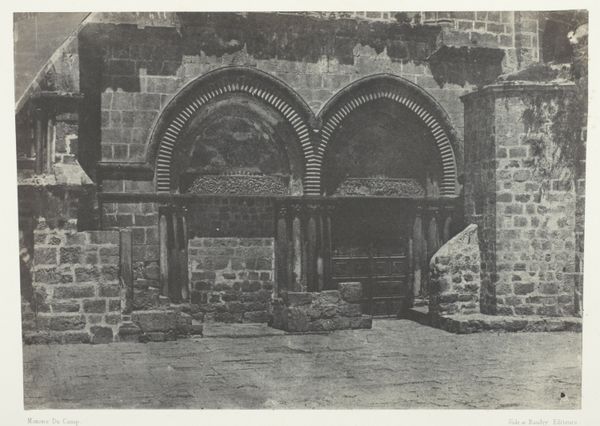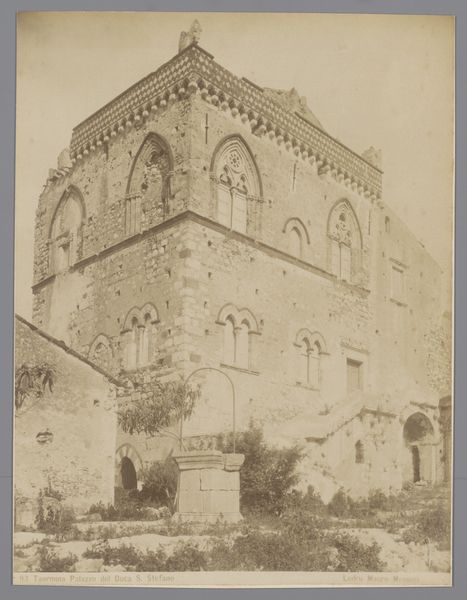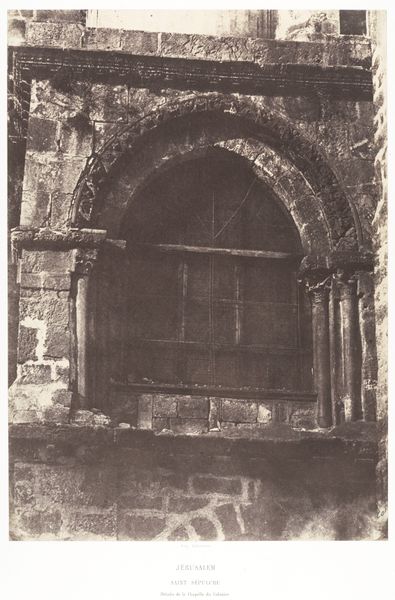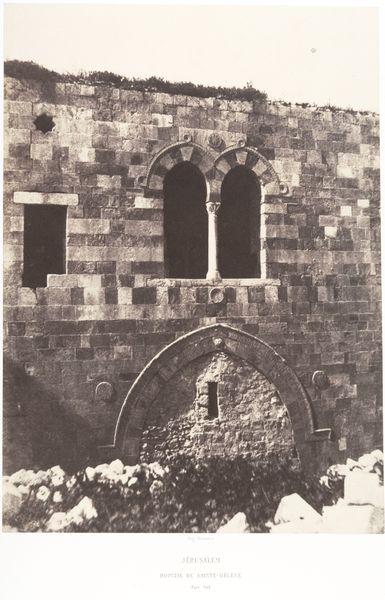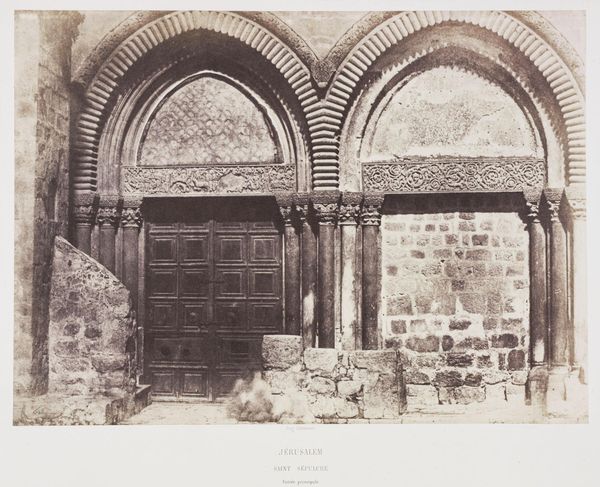
print, photography, gelatin-silver-print
# print
#
landscape
#
photography
#
ancient-mediterranean
#
gelatin-silver-print
#
cityscape
#
islamic-art
Dimensions: Image: 10 13/16 × 8 5/16 in. (27.5 × 21.1 cm) Mount: 17 15/16 × 23 1/4 in. (45.5 × 59 cm)
Copyright: Public Domain
Curator: What strikes me immediately about Louis de Clercq’s 1860 gelatin silver print, "Jerusalem. Entrée de l'Église du St. Sépulcre," is the sheer weight of history captured in its monochrome tones. It's almost ghostly. Editor: Yes, a potent visual testament. De Clercq frames the entrance to the Church of the Holy Sepulchre, and that very entryway speaks volumes about power dynamics throughout history. It implicates colonial gazes, doesn't it? The gaze of the Westerner observing the ancient Holy Land. Curator: It does, but perhaps it also embodies a deeper connection—the architecture, those rounded arches, hint at a visual lineage that stretches back to Roman forms adopted by early Christians. Notice how these elements became symbolic carriers of faith? Editor: Precisely! That faith then gets mediated through a distinctly nineteenth-century European lens. The sharp clarity made possible by the photographic process presents the church almost as an artifact to be scientifically documented, a subtle act of claiming authority through observation. Curator: And yet, look closer at the subtle play of light and shadow on those ancient stones. It speaks of human endurance and perseverance across millennia. Light, traditionally symbolizing divine presence, caresses the very structure housing some of the most revered relics of Christianity. Editor: But we must remember that even the concept of “relics” is culturally and politically loaded. De Clercq's photograph comes into being at a time of burgeoning Orientalism and Western imperialism in the Middle East. Are we celebrating history or reifying colonial narratives? Curator: Perhaps both exist in tension. The photograph functions as a historical document—testimony to the church’s architecture and religious significance—while also perpetuating, or perhaps inadvertently, a visual power dynamic of observer and observed. The Church of the Holy Sepulchre isn't solely Christian either; it's a site contested by multiple faiths. Editor: Exactly, and a simple photograph can hardly capture the complexity of centuries of religious conflicts and coexistence. That being said, de Clercq's photograph does freeze a moment, prompting critical examination of whose story is being told and from what vantage point. Curator: A frozen moment, pregnant with both history and its inevitable reinterpretation. Thank you for your thoughtful contextualization. Editor: My pleasure. Seeing through that lens opens new perspectives on these images from the past.
Comments
No comments
Be the first to comment and join the conversation on the ultimate creative platform.
